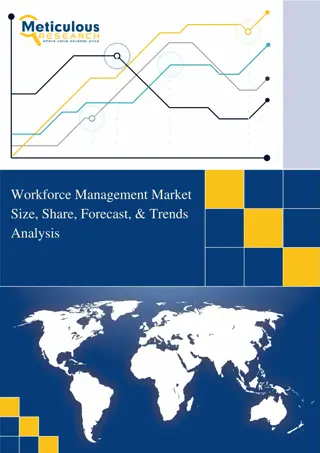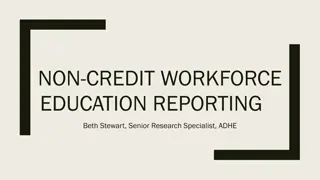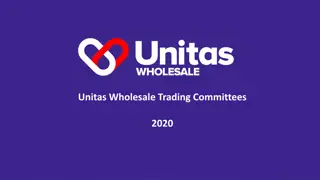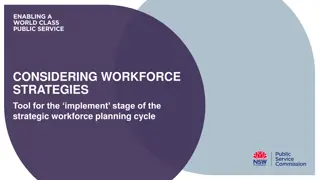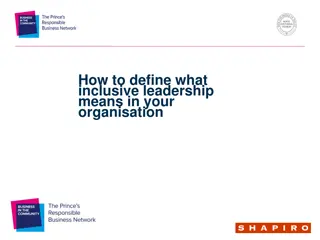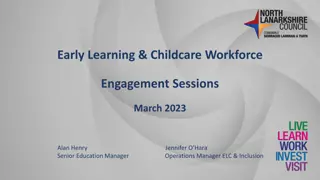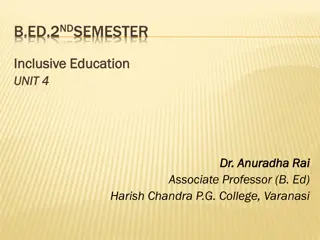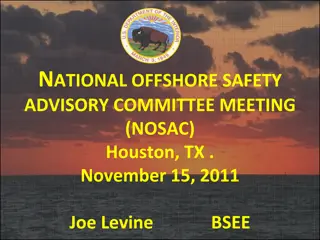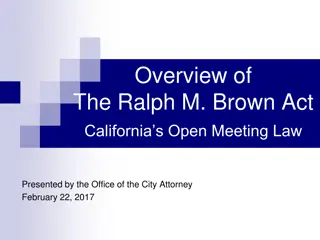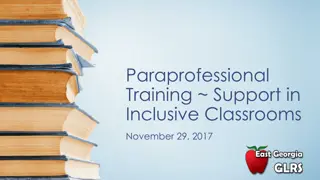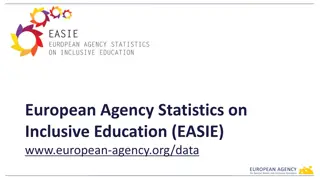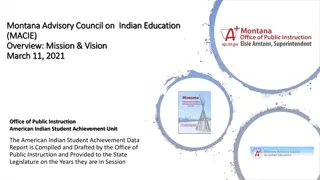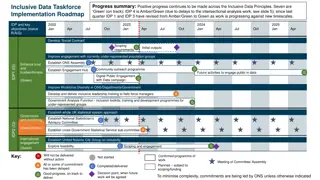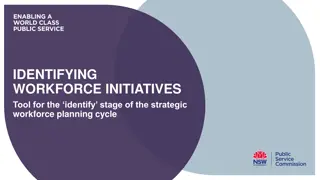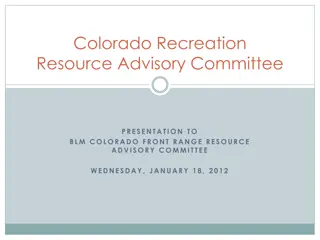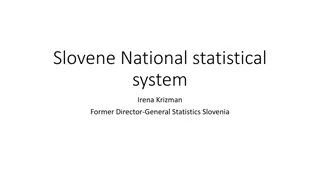Enhancing Advisory Committees for Inclusive Workforce Education
This material discusses the importance of building inclusive advisory committees in workforce education. It covers topics such as industry involvement in education, advisory committee best practices, engaging employers, and indispensable traits for high-performance committees. Insights on identifying and cultivating employer partners, involving them in programs, and recognizing their contributions are provided. The resource emphasizes the significance of diverse membership, effective leadership structures, and active engagement between meetings for successful advisory committees.
- Advisory Committees
- Workforce Education
- Inclusive Practices
- Employer Engagement
- High-Performance Committees
Download Presentation

Please find below an Image/Link to download the presentation.
The content on the website is provided AS IS for your information and personal use only. It may not be sold, licensed, or shared on other websites without obtaining consent from the author. Download presentation by click this link. If you encounter any issues during the download, it is possible that the publisher has removed the file from their server.
E N D
Presentation Transcript
Building Inclusive Advisory Committees Lauren Hadley, Director of Workforce lhadley@shoreline.edu Workforce Education Council February 29, 2024
Presentation Overview Goals for the presentation Brief history of industry involvement in education Philosophy and best practices Advisory committee best practices (handout) Activity Sample discussion questions from the CLNA Review of goals Questions
What are you hoping to get out of today s conversation?
Benchmarks in prof-tech education 1984 Carl D. Perkins Vocational and Applied Technology Act 1917-1919 Charles Prosser, Commissioner for vocational education Late 1800s The industrial revolution 1917 Smith Hughes Act
1. Identify your employer partner 2. Cultivate them involve them in your programs 3. Solicit ask them to give to your program 4. Recognize don t underestimate a certificate they can hang in their office 5. Stewardship honor their contribution BEGIN AGAIN! Each trip around the circle the investment grows.
Indispensable traits of high-performance advisory committees by Scott Newman Formal leadership structure Careful management of members Diversity of membership Effective use of face-to-face time (10% rule) Accomplish real work between meetings Acknowledge advisors for their contributions Extensive participation Source: Newman, S. (2010). Indispensable Traits of High-Performance Advisory Committees. Industry and Higher Education, 24(1), 11-15.
A resource guide to engaging employers by Randall Wilson Ladder of Employer Engagement Source: Wilson, R. (2015). A Resource Guide to Engaging Employers. Retrieved from Jobs for the Future website: http://www.jff.org/publications/resource-guide-engaging- employers
What do advisors say? 1. I got involved because I was invited 2. Networking with colleagues 3. Involved because they feel they make a difference 4. Listen to industry 5. Engagement strategies 6. Meeting mechanics
Creating Belongingness 1. Provide an orientation (1:1 is best). 2. Make introductions 3. Remember the details (i.e. nametags) 4. Invite participation 5. Intentional recruitment of members and committee chairs
Paired Discussion & Handout What one thing did you hear today are you going to implement with your advisory committee work?
Straight from the CLNA Element 2 Evaluation of Student Performance Advisory Committee Discussion Topics 2.B Where are the biggest gaps in Perkins Performance Indicators among student demographic subgroups? What strategies might narrow this gap? 2.C Where are the biggest gaps in Perkins Performance Indicators among Perkins special populations? What strategies might narrow this gap? 2.D In which CTE programs is the enrollment of one gender over 75% of the total program enrollment? Where there are program disparities in performance in 3P1, what is being done to address them?
Straight from the CLNA Element 3 Evaluation of CTE Programs Advisory Committee Discussion Topics 3.B Which programs do not yet incorporate current industry standard equipment, appropriate classroom, and laboratory space, and/or quality instructional materials? 3.C How does the institution or district partner with stakeholders to ensure program alignment to workforce needs? 3.D What strategies are in place to recruit and retain employers participating in work-based learning? What should be added? 3.E How is the institution or district evaluating employer satisfaction with the learners they supervise and the quality of the work-based learning experiences? How are program outcomes met and/or reinforced by work-based learning activities? 3.F Does the institution have adequate CTE program design? Indicators include growing and sustainable enrollment, meaningful programs of study, articulation agreements, sequenced progression of courses within program area, meaningful credentials, and program evaluation.
Straight from the CLNA Element 5 Advisory Committee Discussion Topics 5.B What processes are in place to recruit new CTE educators who reflect your student population? 5.C What strategies are used to support the retention of high-quality CTE educators?
They could be talking about us in 25 years.




